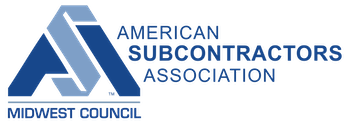Are you using all the tools that are available to you? Just as you wouldn’t think twice about using the proper physical tool for the job; are you extending this logic process through to your safety efforts?
The real purpose of a job safety analysis is to protect the worker from job hazards that might cause bodily harm. Although there are laws that compel employers to provide safe environments for their workers, many employers go beyond what is required by law to really create safe working conditions for their workers. The government through the Occupational Safety and Health Administration (OSHA) has given employers some guidelines on job hazard analyses/ job safety analysis, and is continually providing assistance to companies on their efforts to install health and safety management systems for their employees.
The burden of providing safe working conditions for workers lies on the employers, who must be vigilant in giving protection to their workers. In formulating safety measures that can be used by the company for its employees, gathering the correct data is vital. The complete information on the conditions of the workplace and the workers is important because it is from such information that potential job hazards are identified and appropriate solutions might be proposed to get rid of the hazards. A good safety analysis starts with the efficient gathering of data.
Here are a few items of critical data that must be collected to formulate a good JSA.
- The document where the data is written must contain the job information details and the physical address of the working place. The job must have a name and a job number to identify and distinguish it from other jobs.
- The number of employees needed and the number of supervisors must be indicated. The presence of phones with access to emergency phones must be determined. All vital emergency contact information should be included and made easily available to your employees at the work location. This information extends to emergency phone numbers for utility companies as well.
- Evacuation and fire exit points must be accessible.
- If the job requires lifting of loads, the tonnage lifted for that particular day must be recorded. There should be a weight limit set for a single load to be lifted and the approval of a supervising engineer is needed for loads exceeding the limit.
- The data gathered should also include all the physical hazards that the working place is exposed to, such as electrical installation, elevated platforms, elevators, heavy equipment, fire hazards, vehicle traffic, slippery floors and many others. Health exposure hazards must be indicated, including, but not limited to chemical exposure, room temperature changes, laser and radiological emissions, heat and noise pollutants, silica exposure, biological hazards like germs and insects, toxic materials, and Asbestos.
- Finally, the report should contain the information on the personal protective equipment used by the workers, such as gloves, hats, boots, protective clothing, safety goggles, glasses, face shields, safety vests, etc. Routine inspection on the premises made by authorities and in-house safety inspectors must be recorded. All the required permits for work being done in the premises must be indicated and recorded.
Once you do a couple of these it is not as difficult as it first seems. If you have any further questions feel free to contact me.
As always, be safe!
Michael Sicking
Safety International


